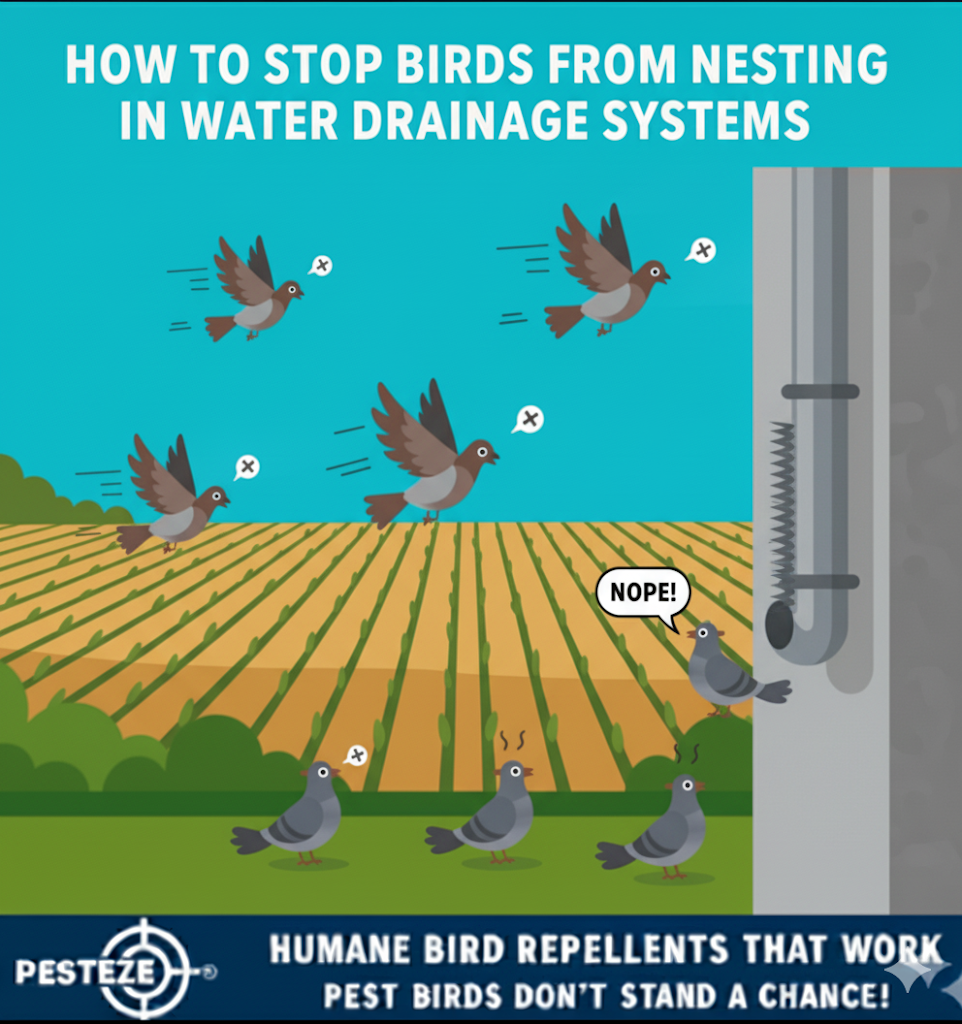HOW TO STOP BIRDS FROM NESTING IN WATER DRAINAGE SYSTEMS

HOW TO STOP BIRDS FROM NESTING IN WATER DRAINAGE SYSTEMS
SUMMARY
Birds nesting in water drainage systems can cause serious blockages, flooding, and structural damage. Humane bird control strategies such as netting, screening, and regular maintenance keep drainage systems clear, protect property, and ensure effective water flow.
FEATURES
-
Flood Prevention: Stops nests and debris from clogging drainage systems.
-
Structural Protection: Prevents water damage to roofs, walls, and foundations.
-
Health & Safety: Reduces risks from droppings and nesting materials.
-
Durable Solutions: Weather-resistant deterrents ensure long-lasting effectiveness.
-
Humane Practices: Keeps birds out without harming them.
-
Low Maintenance: Simple upkeep reduces the need for costly repairs.
-
Cost Savings: Avoids expensive water damage and cleanup.
-
Versatile Application: Works for gutters, downspouts, culverts, and storm drains.
GUIDE DESCRIPTION
Water drainage systems, including gutters, downspouts, and culverts, are common nesting spots for birds like pigeons, sparrows, and starlings. These areas provide shelter from predators and the elements, but once birds build nests, they can create major issues. Blocked drainage can lead to water pooling, foundation damage, mold growth, and even roof collapse in extreme cases.
The most effective prevention methods involve physical barriers. Installing gutter guards, wire mesh, or netting ensures birds cannot access the drainage system. For large openings, such as culverts or storm drains, heavy-duty screening or grates work well to block entry. Visual deterrents like reflective tape or predator decoys can be added to discourage birds from approaching in the first place.
Routine inspections and cleaning are essential for long-term success. By combining exclusion methods with preventive maintenance, property owners can safeguard their drainage systems, prevent costly damage, and ensure humane bird control.
- Smrithi Art


Comments 0